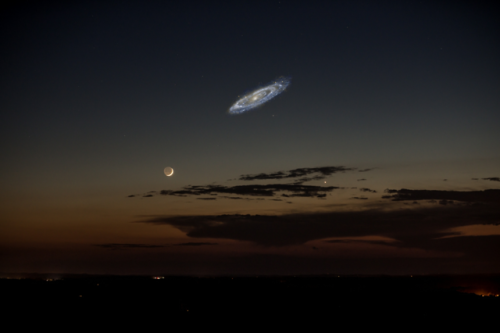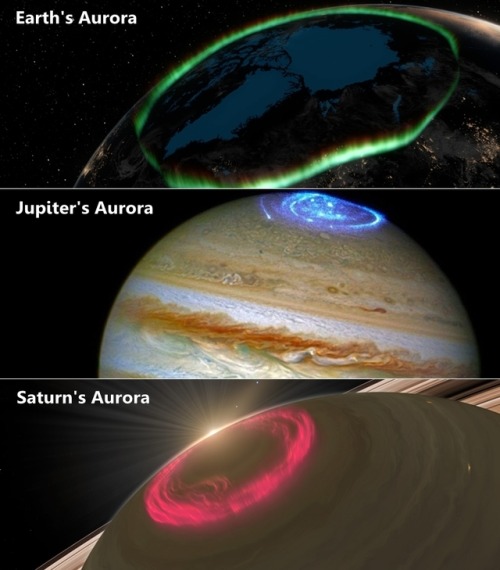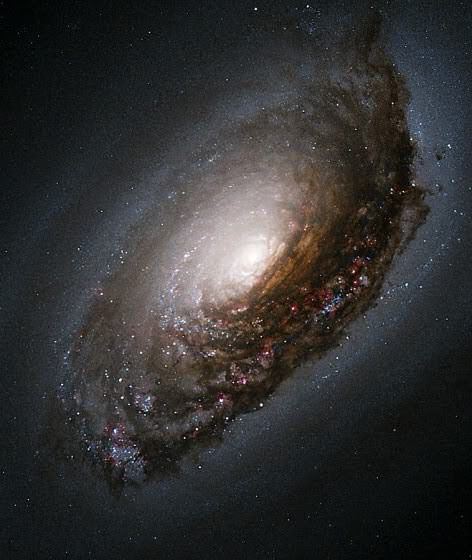The Unreasonable Effectiveness Of Mathematics In The Natural Sciences
The Unreasonable Effectiveness of Mathematics in the Natural Sciences
Scholars have often expressed astonishment for how well mathematics works to describe our physical world. In 1960, Eugene Wigner published an article with the title above commenting that
…the mathematical formulation of the physicist’s often crude experience leads, in an uncanny number of cases, to an amazingly accurate description of a large class of phenomena.
Here are some others’ thoughts:
The most incomprehensible thing about the universe is that it is comprehensible.
— Albert Einstein
Physics is mathematical not because we know so much about the physical world, but because we know so little; it is only its mathematical properties that we can discover.
— Bertrand Russell
How can it be that mathematics, being after all a product of human thought which is independent of experience, is so admirably appropriate to the objects of reality?
— Albert Einstein
Our physical world doesn’t have just some mathematical properties, it has only mathematical properties.
— Max Tegmark
Physicists may have fallen prey to a false dichotomy between mathematics and physics. It’s common for theoretical physicists to speak of mathematics providing a quantitative language for describing physical reality… But maybe… math is more than just a description of reality. Maybe math is reality.
— Brian Greene
More info at https://en.wikipedia.org/wiki/The_Unreasonable_Effectiveness_of_Mathematics_in_the_Natural_Sciences
More Posts from Riekod and Others
If Earth had Saturn’s Rings
From an excellent post by Jason Davis
From Washington, D.C., the rings would only fill a portion of the sky, but appear striking nonetheless. Here, we see them at sunrise.

From Guatemala, only 14 degrees above the equator, the rings would begin to stretch across the horizon. Their reflected light would make the moon much brighter.

From Earth’s equator, Saturn’s rings would be viewed edge-on, appearing as a thin, bright line bisecting the sky.

At the March and September equinoxes, the Sun would be positioned directly over the rings, casting a dramatic shadow at the equator.

At midnight at the Tropic of Capricorn, which sits at 23 degrees south latitude, the Earth casts a shadow over the middle of the rings, while the outer portions remain lit.

via x

Andromeda’s actual size if it was brighter
via reddit

The Carina Nebula from the VLT

A Mesmerizing Model of Monster Black Holes
Just about every galaxy the size of our Milky Way (or bigger) has a supermassive black hole at its center. These objects are ginormous — hundreds of thousands to billions of times the mass of the Sun! Now, we know galaxies merge from time to time, so it follows that some of their black holes should combine too. But we haven’t seen a collision like that yet, and we don’t know exactly what it would look like.

A new simulation created on the Blue Waters supercomputer — which can do 13 quadrillion calculations per second, 3 million times faster than the average laptop — is helping scientists understand what kind of light would be produced by the gas around these systems as they spiral toward a merger.
The new simulation shows most of the light produced around these two black holes is UV or X-ray light. We can’t see those wavelengths with our own eyes, but many telescopes can. Models like this could tell the scientists what to look for.
You may have spotted the blank circular region between the two black holes. No, that’s not a third black hole. It’s a spot that wasn’t modeled in this version of the simulation. Future models will include the glowing gas passing between the black holes in that region, but the researchers need more processing power. The current version already required 46 days!

The supermassive black holes have some pretty nifty effects on the light created by the gas in the system. If you view the simulation from the side, you can see that their gravity bends light like a lens. When the black holes are lined up, you even get a double lens!
But what would the view be like from between two black holes? In the 360-degree video above, the system’s gas has been removed and the Gaia star catalog has been added to the background. If you watch the video in the YouTube app on your phone, you can moved the screen around to explore this extreme vista. Learn more about the new simulation here.
Make sure to follow us on Tumblr for your regular dose of space: http://nasa.tumblr.com.

Artistic conception of the auroras os Saturn and Earth (jupiter’s image is real - ultraviolet) Instagram: wonders_of_the_cosmos
Dust, stars, and cosmic rays swirling around Comet 67P/Churyumov–Gerasimenko, captured by the Rosetta probe. (Source)

M64, The Black Eye Galaxy


Chemistry/Physics: Even more smoke tricks
Source
The Opportunity to Rove on Mars! 🔴
Today, we’re expressing gratitude for the opportunity to rove on Mars (#ThanksOppy) as we mark the completion of a successful mission that exceeded our expectations.
Our Opportunity Rover’s last communication with Earth was received on June 10, 2018, as a planet-wide dust storm blanketed the solar-powered rover’s location on the western rim of Perseverance Valley, eventually blocking out so much sunlight that the rover could no longer charge its batteries. Although the skies over Perseverance cleared, the rover did not respond to a final communication attempt on Feb. 12, 2019.
As the rover’s mission comes to an end, here are a few things to know about its opportunity to explore the Red Planet.
90 days turned into 15 years!
Opportunity launched on July 7, 2003 and landed on Mars on Jan. 24, 2004 for a planned mission of 90 Martian days, which is equivalent to 92.4 Earth days. While we did not expect the golf-cart-sized rover to survive through a Martian winter, Opportunity defied all odds as a 90-day mission turned into 15 years!

The Opportunity caught its own silhouette in this late-afternoon image taken in March 2014 by the rover’s rear hazard avoidance camera. This camera is mounted low on the rover and has a wide-angle lens.
Opportunity Set Out-Of-This-World Records
Opportunity’s achievements, including confirmation water once flowed on Mars. Opportunity was, by far, the longest-lasting lander on Mars. Besides endurance, the six-wheeled rover set a roaming record of 28 miles.

This chart illustrates comparisons among the distances driven by various wheeled vehicles on the surface of Earth’s moon and Mars. Opportunity holds the off-Earth roving distance record after accruing 28.06 miles (45.16 kilometers) of driving on Mars.
It’s Just Like Having a Geologist on Mars
Opportunity was created to be the mechanical equivalent of a geologist walking from place to place on the Red Planet. Its mast-mounted cameras are 5 feet high and provided 360-degree two-eyed, human-like views of the terrain. The robotic arm moved like a human arm with an elbow and wrist, and can place instruments directly up against rock and soil targets of interest. The mechanical “hand” of the arm holds a microscopic camera that served the same purpose as a geologist’s handheld magnifying lens.

There’s Lots to See on Mars
After an airbag-protected landing craft settled onto the Red Planet’s surface and opened, Opportunity rolled out to take panoramic images. These images gave scientists the information they need to select promising geological targets that tell part of the story of water in Mars’ past. Since landing in 2004, Opportunity has captured more than 200,000 images. Take a look in this photo gallery.

From its perch high on a ridge, the Opportunity rover recorded this image on March 31, 2016 of a Martian dust devil twisting through the valley below. The view looks back at the rover’s tracks leading up the north-facing slope of “Knudsen Ridge,” which forms part of the southern edge of “Marathon Valley
There Was Once Water on Mars?!
Among the mission’s scientific goals was to search for and characterize a wide range of rocks and soils for clues to past water activity on Mars. In its time on the Red Planet, Opportunity discovered small spheres of the mineral hematite, which typically forms in water. In addition to these spheres that a scientist nicknamed “blueberries,” the rover also found signs of liquid water flowing across the surface in the past: brightly colored veins of the mineral gypsum in rocks, for instance, which indicated water flowing through underground fractures.

The small spheres on the Martian surface in this close-up image are near Fram Crater, visited by the Opportunity rover in April 2004.
For more about Opportunity’s adventures and discoveries, see: https://go.nasa.gov/ThanksOppy.
Make sure to follow us on Tumblr for your regular dose of space: http://nasa.tumblr.com
-
 janbliksem liked this · 2 years ago
janbliksem liked this · 2 years ago -
 asymptoticway liked this · 3 years ago
asymptoticway liked this · 3 years ago -
 androgynouscloudpeanut liked this · 3 years ago
androgynouscloudpeanut liked this · 3 years ago -
 thepurpleturtle99 liked this · 4 years ago
thepurpleturtle99 liked this · 4 years ago -
 ohhleluh reblogged this · 4 years ago
ohhleluh reblogged this · 4 years ago -
 morningwell liked this · 4 years ago
morningwell liked this · 4 years ago -
 imaginarydreamsihave reblogged this · 4 years ago
imaginarydreamsihave reblogged this · 4 years ago -
 imaginarydreamsihave liked this · 4 years ago
imaginarydreamsihave liked this · 4 years ago -
 happeesus liked this · 4 years ago
happeesus liked this · 4 years ago -
 asteria-grace liked this · 4 years ago
asteria-grace liked this · 4 years ago -
 vote-one-climb liked this · 4 years ago
vote-one-climb liked this · 4 years ago -
 unavion liked this · 4 years ago
unavion liked this · 4 years ago -
 filmetto liked this · 4 years ago
filmetto liked this · 4 years ago -
 marklily liked this · 4 years ago
marklily liked this · 4 years ago -
 iamme27 liked this · 4 years ago
iamme27 liked this · 4 years ago -
 amateuraspect liked this · 4 years ago
amateuraspect liked this · 4 years ago -
 spicedefspicene reblogged this · 4 years ago
spicedefspicene reblogged this · 4 years ago -
 spicedefspicene reblogged this · 4 years ago
spicedefspicene reblogged this · 4 years ago -
 spicedefspicene reblogged this · 4 years ago
spicedefspicene reblogged this · 4 years ago -
 spicedefspicene reblogged this · 4 years ago
spicedefspicene reblogged this · 4 years ago -
 spicedefspicene reblogged this · 4 years ago
spicedefspicene reblogged this · 4 years ago -
 spicedefspicene reblogged this · 4 years ago
spicedefspicene reblogged this · 4 years ago -
 wthingsstuff reblogged this · 4 years ago
wthingsstuff reblogged this · 4 years ago -
 wthingsstuff liked this · 4 years ago
wthingsstuff liked this · 4 years ago -
 daddywulff reblogged this · 5 years ago
daddywulff reblogged this · 5 years ago -
 mybrothersnameisjeff reblogged this · 5 years ago
mybrothersnameisjeff reblogged this · 5 years ago -
 mybrothersnameisjeff liked this · 5 years ago
mybrothersnameisjeff liked this · 5 years ago -
 3s-are-green liked this · 5 years ago
3s-are-green liked this · 5 years ago -
 bufferoverflowing reblogged this · 5 years ago
bufferoverflowing reblogged this · 5 years ago -
 kryu liked this · 5 years ago
kryu liked this · 5 years ago -
 theinquisitivereceptacle liked this · 5 years ago
theinquisitivereceptacle liked this · 5 years ago -
 cantfiguremylifeout reblogged this · 5 years ago
cantfiguremylifeout reblogged this · 5 years ago -
 cantfiguremylifeout liked this · 5 years ago
cantfiguremylifeout liked this · 5 years ago -
 reachforfre-ed-om liked this · 5 years ago
reachforfre-ed-om liked this · 5 years ago -
 maya-cmpbell liked this · 5 years ago
maya-cmpbell liked this · 5 years ago -
 jeta1africa liked this · 5 years ago
jeta1africa liked this · 5 years ago -
 conqueringfortitude liked this · 5 years ago
conqueringfortitude liked this · 5 years ago -
 15letthegamesbegin15 liked this · 5 years ago
15letthegamesbegin15 liked this · 5 years ago -
 thought-ripples reblogged this · 5 years ago
thought-ripples reblogged this · 5 years ago -
 mathfreakmustaine reblogged this · 5 years ago
mathfreakmustaine reblogged this · 5 years ago -
 klovesmia reblogged this · 5 years ago
klovesmia reblogged this · 5 years ago -
 klovesmia liked this · 5 years ago
klovesmia liked this · 5 years ago